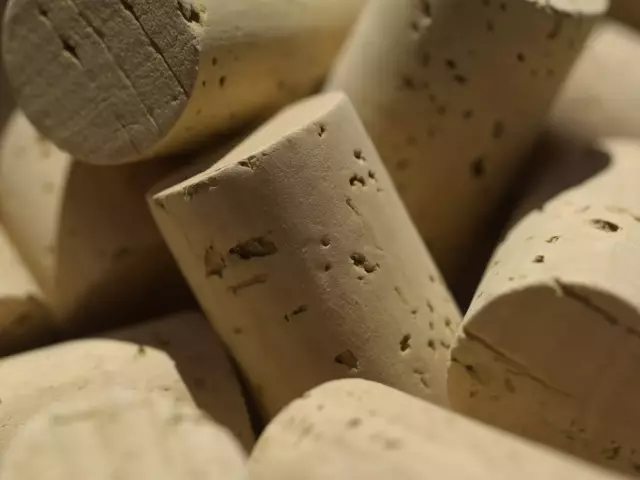Levels of Sweetness in German Wines
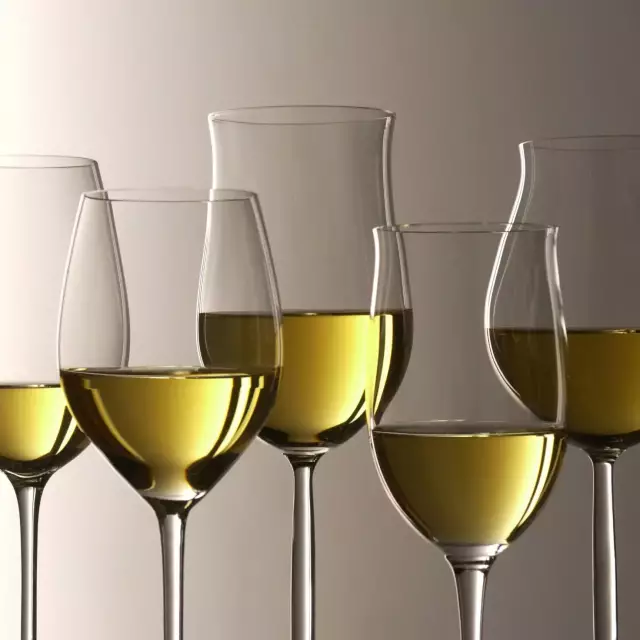
German wines have a wide range of residual sugar contents. But 50 percent of German wines are dry.
Facts
-
9
A wine may have a maximum of nine grams of residual sugar if it is to be marketed as "dry".
-
50
50 Prozent aller deutschen Qualitäts- und Prädikatsweine werden in der trockenen Geschmacksrichtung angeboten.
There are four different tastes in German wines:
Dry is the sweetness level for wines that are almost or completely fermented; this means for wines with a residual sugar content of up to 4g / l. Legislation also permits the term “dry” up to a residual sugar content of 9g if the total acidity expressed in g / l tartaric acid is at most 2g / l lower than the residual sugar content (formula: acid + 2 up to a maximum of 9). A dry wine is not synonymous with acidic. Rather, it is because it only contains a small amount of unfermented sugar, that a higher acidity is more likely to be perceived. Half of all German Qualität and Prädikat wines were marketed in the dry flavour in 2022.
Semi-dry wines may have up to 12 grams of residual sugar per liter, or up to 18g / l if the residual sugar content does not exceed the acidity level by more than 10g. (Formula: acid + 10 up to the maximum limit 18).
Often you can find the term feinherb on wine labels. This unofficial fifth taste is not clearly defined, but is usually classified between semi-dry and sweet. Although it is not officially regulated by wine law, it is becoming increasingly popular.
Semi-sweet wines have a residual sugar content that exceeds the values for semi-dry, but reaches a maximum of 45 g / l.
The statement sweet is permissible from 45 g / l.
How does the sweetness get into the wine?
If the fermentation of the wine is interrupted before the end, for example by cooling, the natural, unfermented sugar from the grape remains in the wine.
Varietals

More recipe ideas
Light and fluffy: cashew coconut mousse with passion fruit Cashew coconut mousse with passion fruit
An airy cashew coconut mousse with passion fruit
- 400g Cashewkerne
- 400ml Haferdrink
- 6EL Agavendicksaft
- 6EL Kokosflocken
- 4 Passionsfrüchte
- 1 Prise Vanille
Place the cashews in a container and add enough water to cover the cashews sufficiently. Place the cashews in the fridge to soak overnight.
(With a high-performance blender, 3-4 hours is also sufficient.)
Drain the water and place the cashews in the blender with the oat milk, agave syrup and coconut flakes. Add the vanilla and blend until the mousse is creamy and no longer contains any chunks.
<p
<p>Divide the mousse between four glasses. Halve the passion fruit, scrape out the flesh with a teaspoon and place on top of the mousse. Decorate with coconut flakes.
- Pinot Blanc (süß & edelsüß)
- Riesling (süß & edelsüß)
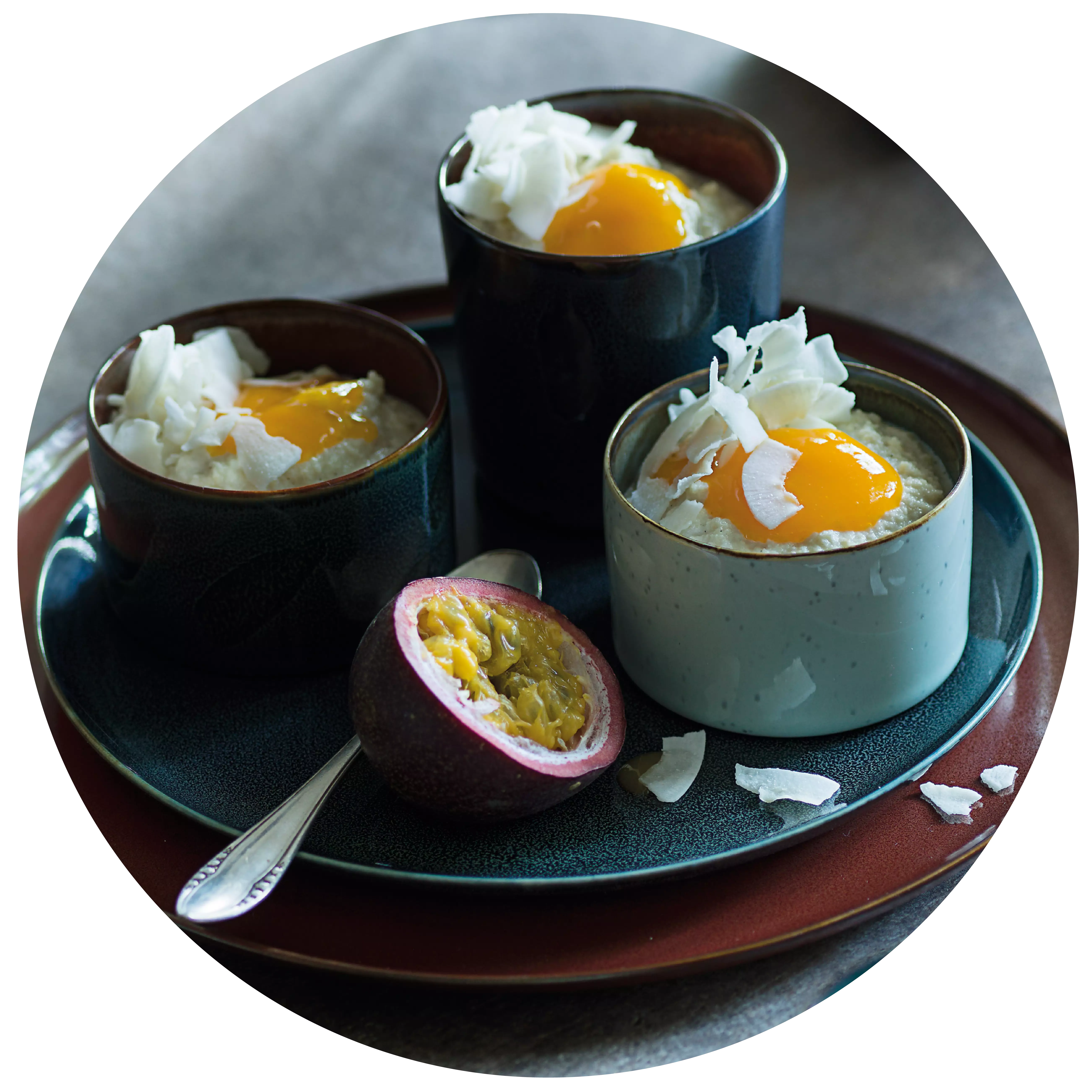
with pears, beans, parsley root and black walnuts Venison medallions
with pears, beans, parsley root and black walnuts
- 12 Stück Rehmedaillions (a 80g)
- 30 Gramm gebratene Speckstreifen
- 200 ml Bechamelsauce
- 3 EL Sonnenblumenöl
- 8 kleine Petersilienwurzeln mit Grün (alternativ Knollensellerie)
- 6 - 8 breite Schnippelbohnen
- 1 große Birne
- 4 - 6 schwarze Walnüsse
- 100 ml Wildfond
- 2 EL Butter
- 2 Stängel glatte Petersilie
- nach Geschmack Salz
Preheat the oven to 180 °C top and bottom heat. Clean, peel and trim the parsley roots. Clean the beans and cut into diagonal pieces. Blanch the parsley roots and beans separately in boiling salted water and rinse immediately in iced water.
Cut the walnuts into eighths and warm in the game stock. Wash the unpeeled pear, cut into eighths, remove the core and cut into thin slices. Fry the venison medallions on both sides in oil, then finish cooking in the oven for approx. 3 - 5 minutes.
In the meantime, toss the beans and parsley roots in melted butter and season with salt. Arrange the vegetables with the black walnuts and pear slices on large plates. Place the medallions on top, garnish with game stock, Béchamel sauce and bacon strips.
Tip: You can make your own black walnuts. To do this, prick the walnuts all over with a fork or skewer and place in water for 10 days. Change the water every day so that the tannic acid can drain off. Boil the nuts 3 times in salted water until they are deep black. Simmer with bay leaves and peppercorns for approx. 20 minutes until soft. Layer in preserving jars and cover with syrup. The nuts can be kept for approx. 1 year.
- Spätburgunder / Pinot Noir (trocken)
- Pinot Gris (trocken)
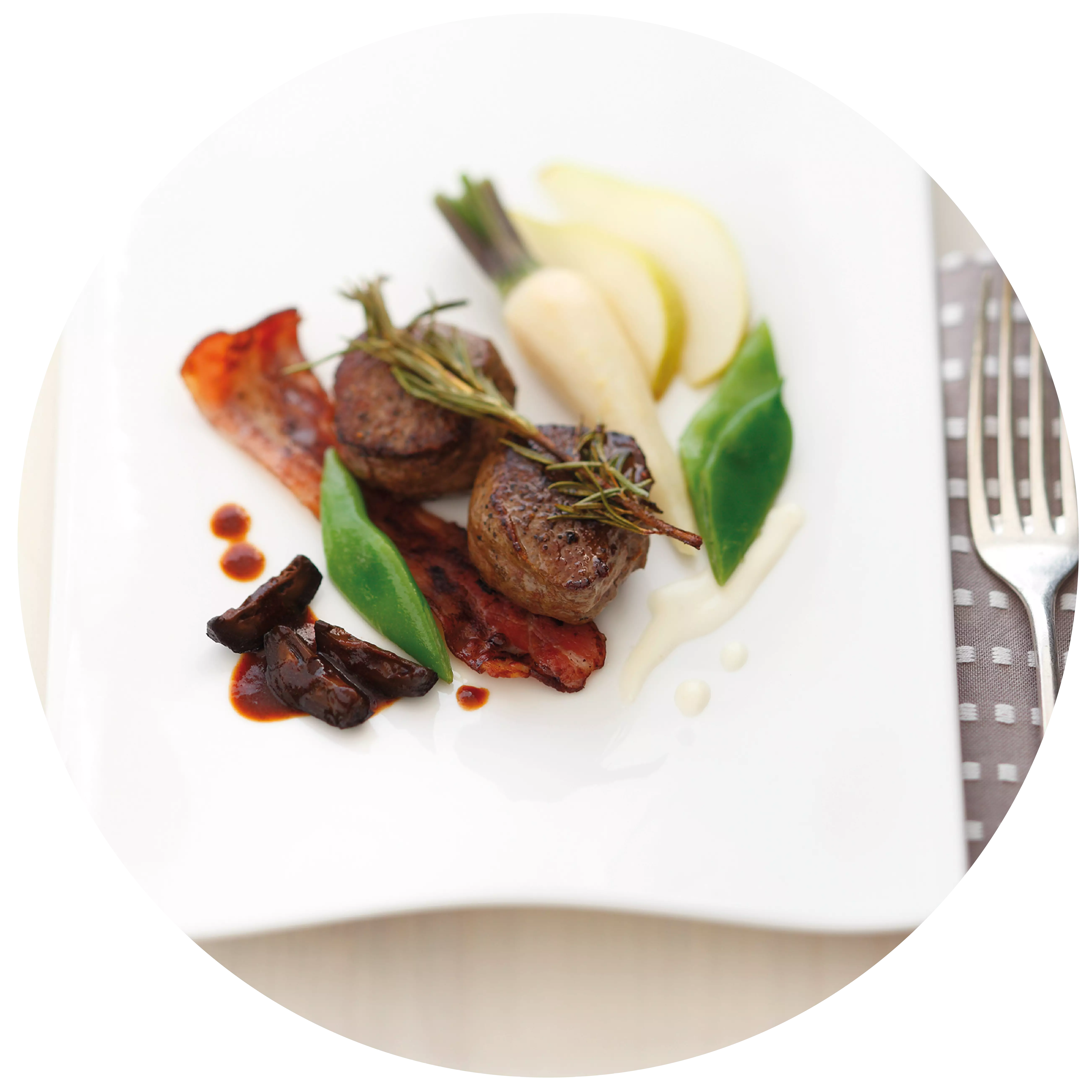
Japanese hollandaise succeeds with wasabi paste Salmon with Japanese hollandaise and green asparagus
Combine salmon with hollandaise and asparagus with a dry Riesling.
- 4x 150g Lachsfilet mit Haut
- 1 Limette
- 2 Zehen Knoblauch
- 4 EL Honig
- 10 EL Sojasauce
- 200g Butter
- 4 Eier
- 1 EL Joghurt
- 2 EL Reisessig
- 2 EL Wasabipaste
- 500 g Grüner Spargel
For the marinade, finely chop the garlic first. Wash the lime in hot water, grate the zest and squeeze out the juice and bring everything to the boil with the honey and soya sauce. Put to one side.
Now prepare the Japanese hollandaise: Bring 180g butter to the boil. Place the egg yolks, yoghurt, rice vinegar, wasabi paste and a pinch of salt in a tall measuring jug and mix with a hand blender. Gradually mix the boiling (!) butter into the egg yolks using a hand blender. Season the hollandaise with salt and pepper to taste and keep the measuring jug warm in hot water.
Peel the bottom third of 500 g green asparagus and cut off the ends. Melt 1 tbsp butter in a large pan. Add the asparagus to the pan, pour in 50 ml water and season with salt and pepper. Cover and bring to the boil briefly.
Fry the salmon fillets on the skin side in a little oil for about 4 minutes. Turn the salmon and fry for a further 2 minutes. Then turn again and baste with the marinade. Remove the salmon from the pan and reduce the marinade until thick. Brush the salmon with it. Serve the salmon with the hollandaise and asparagus. Enjoy your meal!
Wine recommendation:
WINE TIP: Dry Rielsing
- Riesling (trocken)
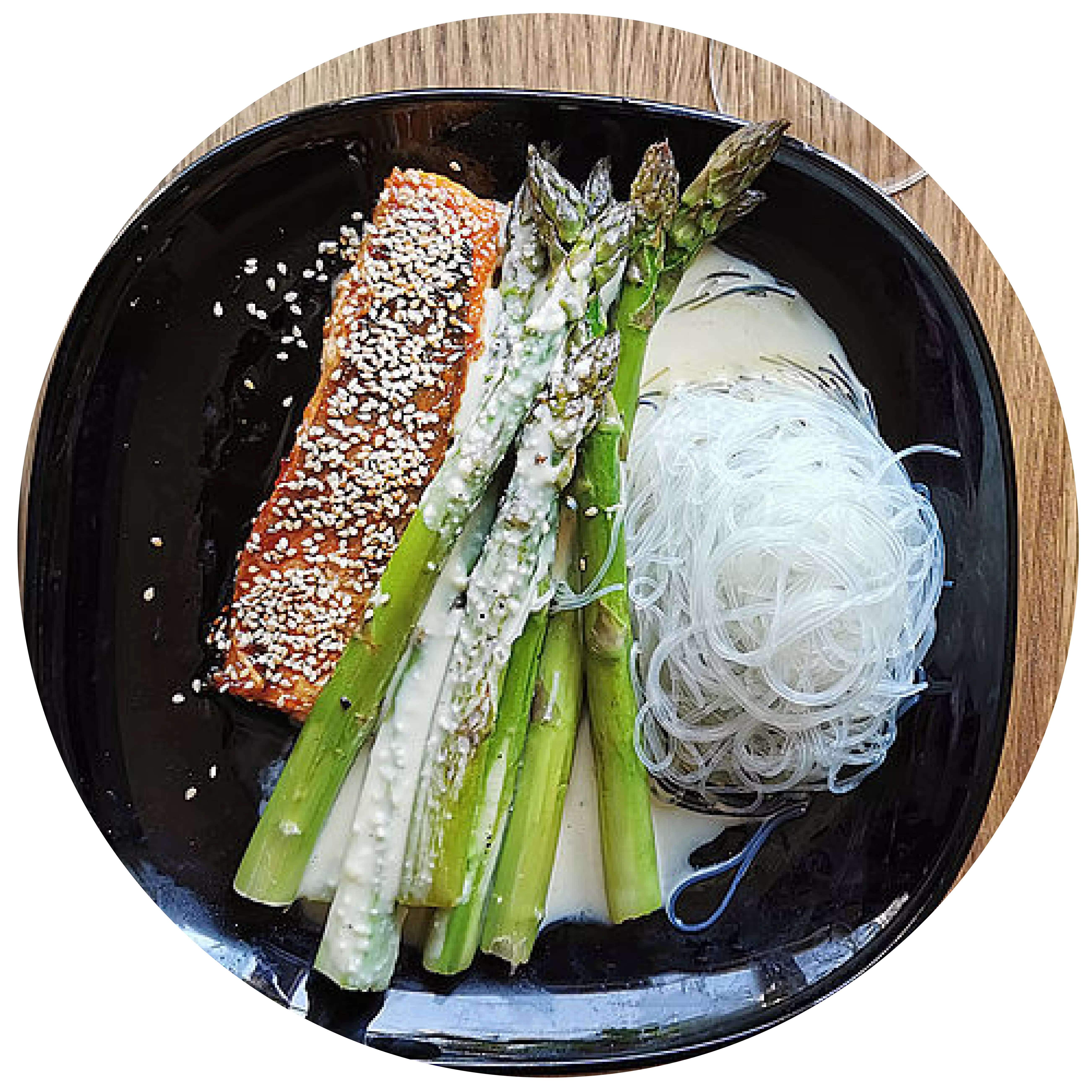
with semi-dry wines Flädlesuppe
with semi-dry wines
- 1 Bund Schnittlauch
- 1 Liter Fleischbrühe
- 150 Gramm Weizenmehl
- 300 ml Milch
- nach Belieben Speckschwarte zum ausreiben der Pflanne
- Etwas Salz
Make a smooth, not too thick batter from the flour, milk, eggs and a pinch of salt. Heat a heavy frying pan on a high heat, rub with bacon fat, pour in a small dollop of batter, allow to spread and fry thin pancakes (flädle).
<p
<p>Leave the pancakes to cool, halve and cut into thin strips.
Place in clear, very hot meat stock and serve immediately.
<p- Trollinger (halbtrocken & feinherb)
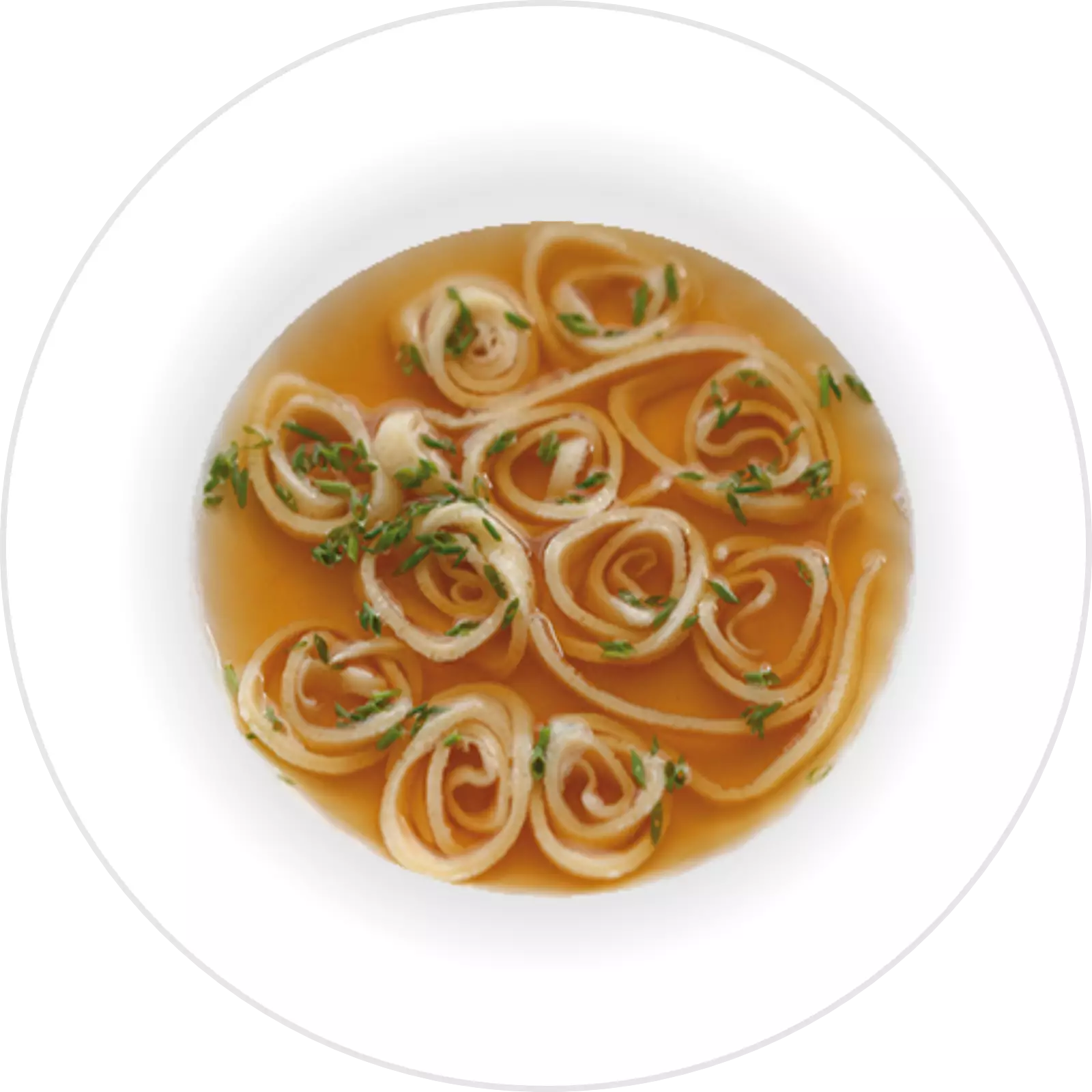
Events
-
Show
winetasting in our winery - blind tasting
Mainz-Hechtsheim




